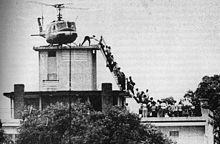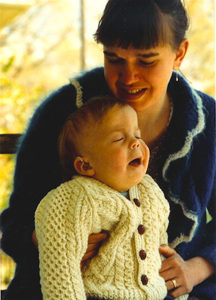Mondays with Mike: The lingering war at home
May 29, 2017 • 3 Comments • Posted in politicsOur friends Jim and Janet will be visiting Vietnam come June. And if they have the kind of experience that seemingly everyone who visits that country has, they are likely to come back marveling at the culture, the food, and the warmth of the people who we were at war with not so long ago.

Saigon fell in 1975, but Ken Burns thinks we’re still not over it.
After Saigon fell in 1975, though, I’m not so sure those of us at home ever fully reconciled with one another. Just a month ago I was party to an argument that I surely didn’t think I’d be hearing in 2017. It was about Jane Fonda, and her infamous trip to North Vietnam while the war was raging. There are those who despise her as a traitor, and those who will defend her to various degrees. This, more than 40 years after the war ended.
It was an unpopular war, one we lost, so the returning veterans didn’t get any ticker tape parades. And lots have had to fight—or are still fighting—for benefits and treatment that were owed them by the VA.
I was just old enough to remember the strife at home clearly. The war tore open a rift in my mom’s side of the family—one that they all carried to the grave. My sister, who was editor of the high school paper, was nearly expelled after she ran an anti-war poem. Hard-hat construction workers beat up long-haired demonstrators. And Kent State. And, and, and….
I was reminded of all this by a NY Times piece written by filmmakers Ken Burns and Lynn Novick titled Vietnam’s Unhealed Wounds. Burns and Novick are doing a documentary on the Viet Nam era that is soon to be released.
Here’s a passage from their article:
For more than a generation, instead of forging a path to reconciliation, we have allowed the wounds the war inflicted on our nation, our politics and our families to fester. The troubles that trouble us today — alienation, resentment and cynicism; mistrust of our government and one another; breakdown of civil discourse and civic institutions; conflicts over ethnicity and class; lack of accountability in powerful institutions — so many of these seeds were sown during the Vietnam War.
I think there’s a lot to the idea that a lot of current divisions are traceable to that time period. The older I get the longer view I take. I’m looking forward to the documentary. But it will be hard to watch.



